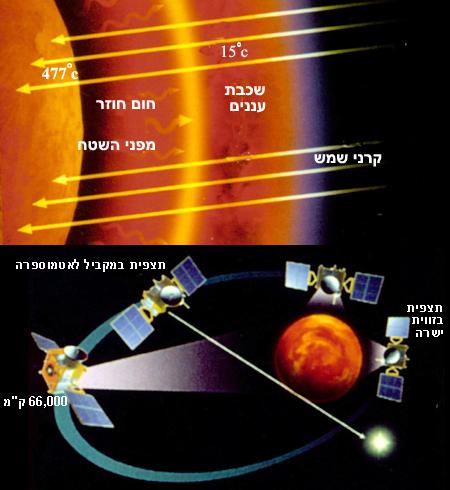This month, Europe launched the first spacecraft in 16 years to Venus, Earth's pesky neighbor

On November 9, a Soyuz rocket was launched from the Ikonur Space Center in Kazakhstan, and rocketed toward Venus, a spacecraft the size of a Volkswagen Beetle. If all goes well, Venus Express, built by the European Space Agency, will enter orbit around the cloud-covered planet in April 2006, and will be the first to reach the planet since 1990. It will face scorching heat, hurricane-force winds and little, if any, water.
Scientists are convinced that the journey to Venus will pay off. This is because the mystery surrounds the star Rav, and the most intriguing puzzle lies, perhaps, in its relationship with the Earth. Venus and Earth are twin brothers, their mass, volume and distance from the Sun are so similar that it is hard to understand how they became such different stars. One of the main differences: while Earth is friendly to life, Venus, whose surface is hot and barren, is hostile to them.
Venus Express, in which 260 million dollars were invested, will prepare the first comprehensive portrait of Venus with the help of seven cloud-penetrating instruments. The spacecraft will investigate how the hot, humid atmosphere swirls at hurricane speeds and will conduct the most thorough study of the star's accelerated greenhouse effect, a process that makes its surface the hottest in the solar system.
The planned orbit of the spacecraft
The spacecraft's orbit around Venus will be highly elliptical. At its closest point it will be only 250 km away from the star, and at its farthest it will be 66,600 km away from it. The spacecraft will complete one lap every 24 hours on average - a closer orbit would consume too much fuel; Venus Express can observe the planet from different positions, at a right angle downward or parallel to it through the atmosphere. The last mode allows you to photograph through the atmosphere because this way the devices can neutralize the effect of the dark shadows of the other stars. The Venus Express mission will last 500 Earth days. The spacecraft can map the entire surface of Venus in 243 Earth days, so during the mission it will be able to map the entire planet twice.
Venus Express will break through the cloud cover and allow you to see through them to explore the atmosphere in detail and at different levels of depth. Five of the seven instruments in the spacecraft will examine the atmosphere using radio waves and with the help of rays in the infrared, visible and ultraviolet fields. Together, these instruments will provide the best measurements yet of the chemical composition of the atmosphere from the surface of Venus to the cloud layer. This data will help scientists determine why the clouds need four Earth days to move around the planet, find out if the cooler of the clouds contain water and maybe even find an extreme form of life in the clouds.

Sunlight penetrates the hot and humid atmosphere of Venus and heats the planet's surface, but since the proportion of carbon dioxide in the atmosphere is no less than 96%, most of the heat is trapped in it. This creates an incredibly effective blanket. The scientists of the European Space Agency hope to learn where in the atmosphere the heat is trapped and how some of it still manages to escape into space. This information may hint at how to deal with the problem of global warming.
The greenhouse effect of Venus
Venus is not the right place for a spacewalk. An astronaut who dives through the clouds will be shaken by winds that reach a speed of 370 km/h and will suffocate from lethal amounts of carbon dioxide. As soon as he reaches the surface of the ground, the astronaut will be crushed under the thick atmosphere with a pressure 90 times stronger than that prevailing on Earth - similar to the pressure at a depth of 900 meters below the surface of the water. And if he still manages to survive, he will have to deal with the temperature of the surface, which reaches 477°C. But, if we manage to build a spaceship that can cope with these conditions, the astronaut will get to witness a fascinating world, dotted with volcanoes, craters and tunnels whose origin is still unclear.
